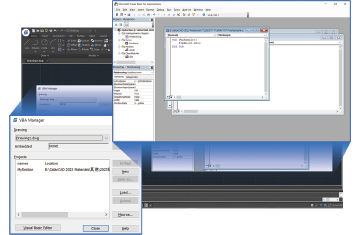Why 2D CAD Remains Popular for Mechanical Design
During the past two decades, 3D CAD technology has garnered significant attention and investment in research and development. The move from 2D drawings to 3D models provides new downstream utility for applications such as model-based design, digital twins, and additive manufacturing (3D printing). Despite these advancements, 2D CAD remains a prevalent tool for mechanical design. Why? Possible explanations for the enduring popularity of 2D CAD lies in a threefold cord of practicality:To get more news about online 2d drafting software, you can visit shine news official website.

For many designers and engineers, 2D drafting is more straightforward, making it easier to learn.
2D CAD requires less computational power than 3D modeling.
Finally, 2D CAD software is less expensive than its 3D counterpart, making it an attractive option for smaller businesses and individuals with budget constraints.
2D CAD also remains the standard for many industry-specific applications where traditional 2D plans continue to be widely used. For example, many smaller machine shops serving SMB (small and medium-sized business) manufacturers still require 2D plans for most contract work. The familiarity and compatibility of 2D drawings make them an enduring choice for these sectors.
There are use cases where 2D still makes sense. Technically, all these drafting products we label as “2D” are capable of drafting in three dimensions. The difference is between wireframe drafting and solid modeling. Not all mechanical design tasks require the level of detail or complexity found in 3D CAD models. Examples include:
schematic design, where the primary goal is to represent the functional relationships between components;
layout planning, which focuses on the spatial arrangement of objects in a 2D plane; and
the design of simple mechanical components that can be adequately represented in two dimensions.
In these scenarios, using 2D CAD can streamline the design process and reduce the likelihood of introducing unnecessary complexity. It is a “time is money” scenario.
Legacy Data
Manufacturing companies of all sizes have accumulated millions of drawings. A high percentage of these drawings contain data that is still relevant and useful. These drawings must be maintained, updated, and are often relied upon as the company’s products are updated or replaced. Continuing to use 2D CAD ensures compatibility with these existing files, reducing the need for time-consuming — and sometimes error-prone — conversions.
Documentation also continues to be an important use case for drafting. Even when a design is created using 3D CAD software, it still needs to be documented in 2D formats for manufacturing, assembly, technical illustrations, or other purposes. 2D CAD software excels at creating these detailed technical drawings, such as orthographic projections and cross-sectional views. Layer management schemes remain valuable, and don’t have to be recreated when converting a 3D model to a set of 2D drawings.
Vendors in Transition
CAD vendors have a different perception of the marketplace than customers. New products and new technology mean new sales. Network licensing and annual contracts are replacing purchased perpetual-use licenses. Autodesk’s AutoCAD has dominated the 2D CAD market for a generation, but no one denies the company has slowed development of new features – often called “being in maintenance mode.”
If a company is more interested in continuing to use 2D CAD than converting all mechanical design to 3D, there are choices to be made. The cost to license one copy of AutoCAD 2023 is approximately $1,955 annually. (AutoCAD now includes the various extensions that were previously sold as separate products, including Mechanical.) If a company used the Mechanical Objects (aka., Smart Objects) feature in AutoCAD, until 2022 it was the only product capable of reading and using Smart Object data. CAD vendor Graebert picked the lock on Mechanical Objects in 2022, and now offers ARES Mechanical for $1,048 as a perpetual license.
Kommentare zu "Why 2D CAD Remains Popular for Mechanical Design"
Es sind noch keine Kommentare vorhanden
Kommentar schreiben
Möchten Sie dem Autor einen Kommentar hinterlassen? Dann Loggen Sie sich ein oder Registrieren Sie sich in unserem Netzwerk.
 17.04.2024
17.04.2024
 12
12
 15
15
 259
259
 Besonders empfehlenswerte Werke:
Besonders empfehlenswerte Werke: